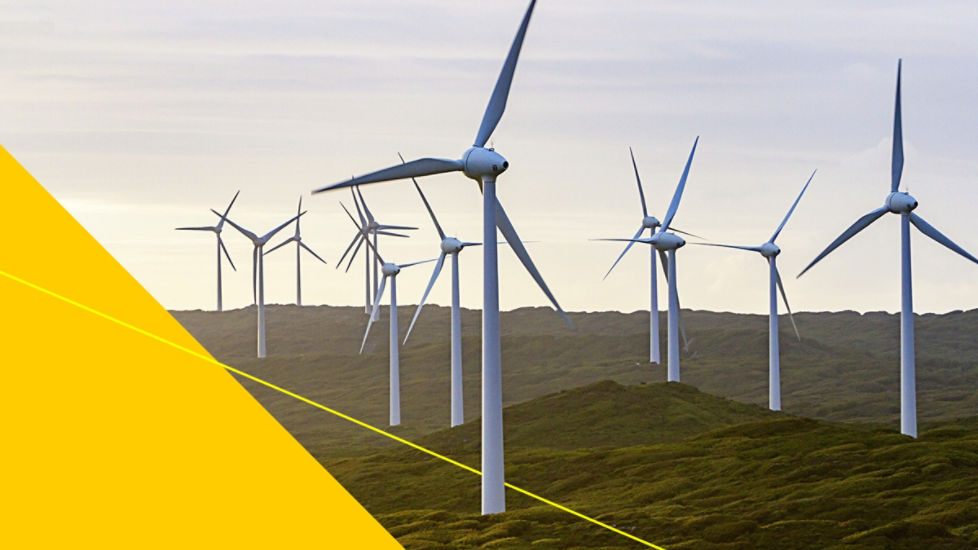Bearing this in mind, South Australia's largest supplier of building and construction materials, Hallett Group, have set about decarbonising cement by innovatively repurposing industrial waste for use in green cement.
The company's green cement transformation project (GCTP) aims to replace more than 50 per cent of traditional, emissions-intensive clinker-based cement used in concrete and mining applications, and to develop a secure supply of supplementary cementitious materials (SCMs) – or products that can replace cement.
To support Hallett on this decarbonisation journey, as sole financier we have tailored a $100 million debt finance package, including a $51 million green loan tranche, with the remainder of the project to be funded by Hallett supported by a $20 million modern manufacturing grant from the Commonwealth government.
CBA executive general manager major client group Chris Williams says Hallett is investing in strategically important infrastructure that will play a key role in reducing Australia's emissions while building the future economy.
"Hallett is bringing innovation to the construction materials industry to simultaneously create jobs and reduce the nation's greenhouse gas emissions in a heavy-emitting industry – that's the kind of win-win we need to get Australia to net zero by 2050," Williams says.
"Hallett's green loan recognises the important environmental and circular economy attributes of its GCTP."
Cement is ubiquitous in modern construction, but you also need concrete foundations for building wind farms or mining critical minerals to deliver the inputs needed for the future economy.
"Getting cement's emissions profile down helps everyone advance to that future, decarbonised economy," Williams says.
Commenting on the debt finance package, Hallett group chief executive officer Kane Salisbury says achieving green loan certification "has been an important milestone on our journey to build the most innovative and sustainable cementitious material offering in Australia and possibly the world".
"We see a real opportunity to create a sovereign and circular domestic supply chain for low-carbon cementitious materials that are used in the manufacture of concrete which continues to be the critical building material for society as we know it," Salisbury says.
"The world cannot decarbonise without cement and concrete. Every wind farm, solar farm, battery and hydro plant is built on foundations made of concrete. That's a real win for our industry and for the people of South Australia."
"Hallett's generational investment in the GCTP project is creating global interest in what can be achieved by pioneering new solutions to benefit by-product waste streams that have previously been regarded as too difficult to bring to market."
CBA's managing director of business banking, Jane Thomson says Hallett's green loan meets the criteria set out by the Asia Pacific Loan Market Association's green loan principles.
As for what makes a loan green, Thomson says a project needs to meet the key criteria of being specifically for a project and assets that "foster a net-zero emissions economy, protect and restore the environment, facilitate adaptation to climate change, or provide other environmental benefits".
"Hallett's green loan recognises the important environmental and circular economy attributes of its green cement transformation project," Thomson says.
"And getting cement's emissions profile down helps everyone advance to that future, decarbonised economy."
Moreover, Thomson says Australia currently does not have a domestic supply chain for SCMs.
"Hallett's GCTP will create that domestic supply chain, by diverting two industrial waste products from landfill and instead processing them into SCMs for use in green cement," she says.
For CommBank, the significant growth in sustainable finance is driven by a range of factors including national, state and corporate-level net zero targets becoming more commonplace and codifying those ambitions in financial arrangements is a widely adopted practice to making them stick.
"At the same time, we've seen a broad range of financial market participants from banks to institutional investors to pension funds set ESG lending targets or sustainability-transition investment mandates, which has created a massive pool of capital available to support ESG-labelled finance," Thomson says.
"What's particularly exciting to see is that while 10 years ago this type of finance was really the remit of the big end of town, what we're seeing now – and what we're focused on at CBA – is sustainable finance being taken up by mid-market corporates.
"This stage in the development of the sustainable finance market is critical, because we do not get to net zero without bringing along the mid-market corporates that make up such a large share of our economy."
CBA's Williams said the bank is proud to support Hallett in "making this important project a reality".
"Our structured and sustainable finance capabilities allowed us to tailor a bespoke solution that meets Hallett's objectives, while appropriately managing the risks associated with a project of this nature," Williams says.
As for Hallett, Salisbury says the company is "incredibly proud" that "our project is being looked at as a template that can be replicated around the world to enable a substantial carbon reduction impact well beyond our region".
This article was originally published in The Australian Financial Review (Nine Publishing) on 3rd November 2023.




